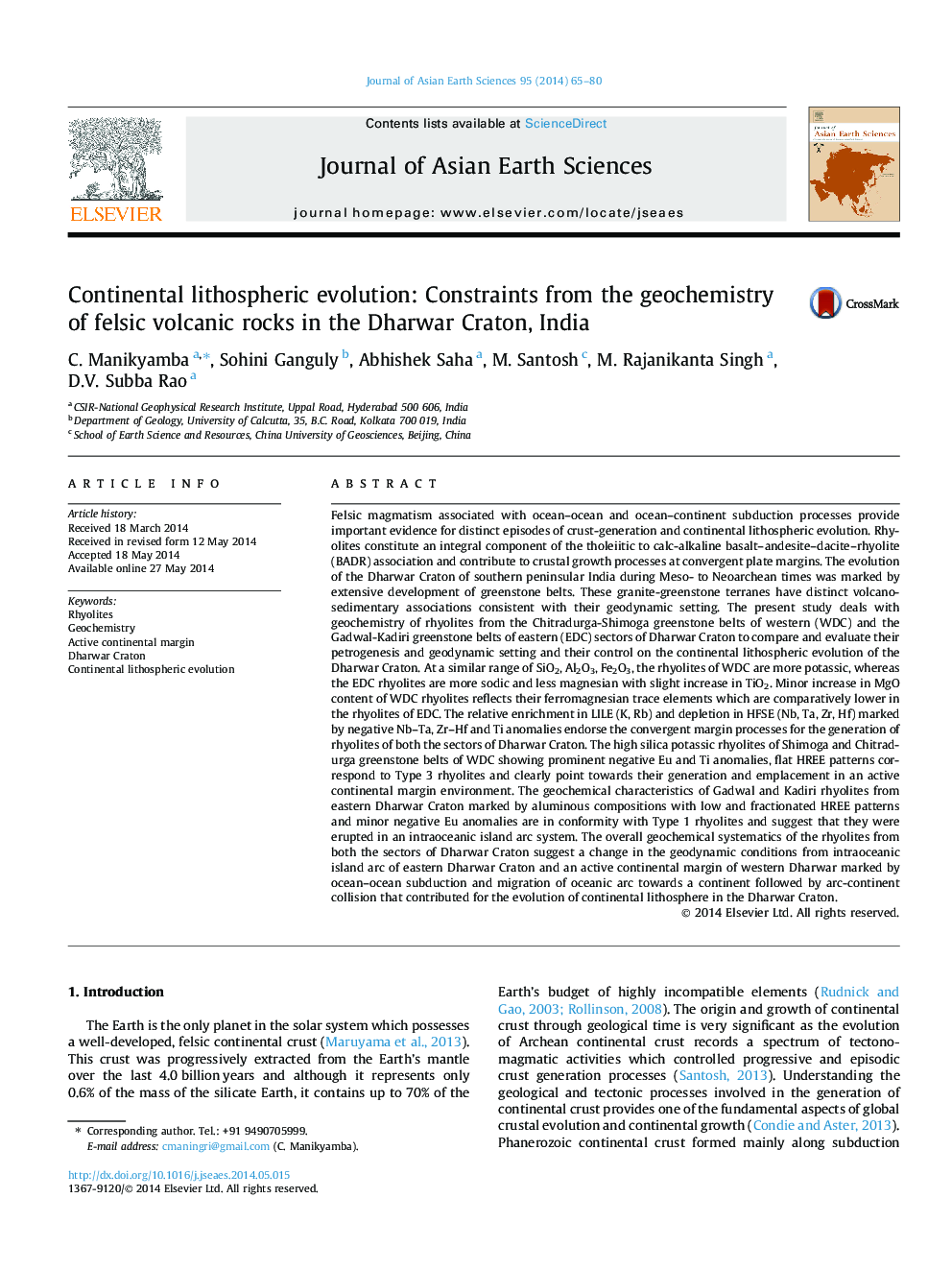| کد مقاله | کد نشریه | سال انتشار | مقاله انگلیسی | نسخه تمام متن |
|---|---|---|---|---|
| 4730621 | 1640373 | 2014 | 16 صفحه PDF | دانلود رایگان |
• Geochemical systematics of rhyolites from the eastern and western Dharwar Craton.
• Eastern Dharwar rhyolites are sodic Type 1 and Western Dharwar rhyolites are potassic Type 3.
• Intra oceanic arc and active continental margin settings for eastern and western Dharwar.
• Continental lithospheric evolution of Dharwar Craton by Arc-continent collision.
Felsic magmatism associated with ocean–ocean and ocean–continent subduction processes provide important evidence for distinct episodes of crust-generation and continental lithospheric evolution. Rhyolites constitute an integral component of the tholeiitic to calc-alkaline basalt–andesite–dacite–rhyolite (BADR) association and contribute to crustal growth processes at convergent plate margins. The evolution of the Dharwar Craton of southern peninsular India during Meso- to Neoarchean times was marked by extensive development of greenstone belts. These granite-greenstone terranes have distinct volcano-sedimentary associations consistent with their geodynamic setting. The present study deals with geochemistry of rhyolites from the Chitradurga-Shimoga greenstone belts of western (WDC) and the Gadwal-Kadiri greenstone belts of eastern (EDC) sectors of Dharwar Craton to compare and evaluate their petrogenesis and geodynamic setting and their control on the continental lithospheric evolution of the Dharwar Craton. At a similar range of SiO2, Al2O3, Fe2O3, the rhyolites of WDC are more potassic, whereas the EDC rhyolites are more sodic and less magnesian with slight increase in TiO2. Minor increase in MgO content of WDC rhyolites reflects their ferromagnesian trace elements which are comparatively lower in the rhyolites of EDC. The relative enrichment in LILE (K, Rb) and depletion in HFSE (Nb, Ta, Zr, Hf) marked by negative Nb–Ta, Zr–Hf and Ti anomalies endorse the convergent margin processes for the generation of rhyolites of both the sectors of Dharwar Craton. The high silica potassic rhyolites of Shimoga and Chitradurga greenstone belts of WDC showing prominent negative Eu and Ti anomalies, flat HREE patterns correspond to Type 3 rhyolites and clearly point towards their generation and emplacement in an active continental margin environment. The geochemical characteristics of Gadwal and Kadiri rhyolites from eastern Dharwar Craton marked by aluminous compositions with low and fractionated HREE patterns and minor negative Eu anomalies are in conformity with Type 1 rhyolites and suggest that they were erupted in an intraoceanic island arc system. The overall geochemical systematics of the rhyolites from both the sectors of Dharwar Craton suggest a change in the geodynamic conditions from intraoceanic island arc of eastern Dharwar Craton and an active continental margin of western Dharwar marked by ocean–ocean subduction and migration of oceanic arc towards a continent followed by arc-continent collision that contributed for the evolution of continental lithosphere in the Dharwar Craton.
Figure optionsDownload as PowerPoint slide
Journal: Journal of Asian Earth Sciences - Volume 95, 1 December 2014, Pages 65–80
